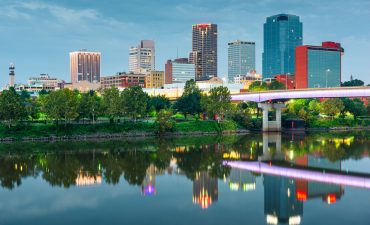We all know that when sunrays reach to earth they heat the surface of rivers, lakes, ocean and other water bodies leaded into process called evaporation. These vapors start rising and it is the tendency of warm air to hold more water vapors. So when it reaches to height where temperature is low. Warm air starts cooling and simultaneously loosing its tendency to hold many vapors. So the water vapors start condensing changing to water droplets and if the cloud reaches more height the water vapor changes to ice crystals. The water droplets should be heavy enough for it to rain. They are not much to cause rain after condensation so they move with the blow of air or just remain suspended there in the air. Now to cause rain they need more water so they start binding with other droplets or with more condensation of vapors grows in its size like we all have seen water droplets joining each other in the window during rain which tends it to become heavy and fall.
CONVECTIONAL RAIN is formed when the water vapors rise in the sky forms clouds after condensing. Then after getting heavier these water droplets falls on the earth in the form of rain. It usually occurs in the end of a hot day. It happens with the heavy drops falling from dark clouds.
FRONTAL RAIN requires an area of warm air and an area of cool air. Warm air rises and cooler air starts taking its place and remains under the warm air. When this warm air comes in contact with cool air the water vapor condense to form cloud followed by rain.
RELIEF RAIN requires an obstacle so that the warm air can rise further. When the air rises it condenses at a height causing clouds. If the water droplets are not heavy enough to rain they form fog. This rain is mainly experienced on mountain hill top, cliffs etc. here the process of making cloud doesn’t work easily causing less rain.






